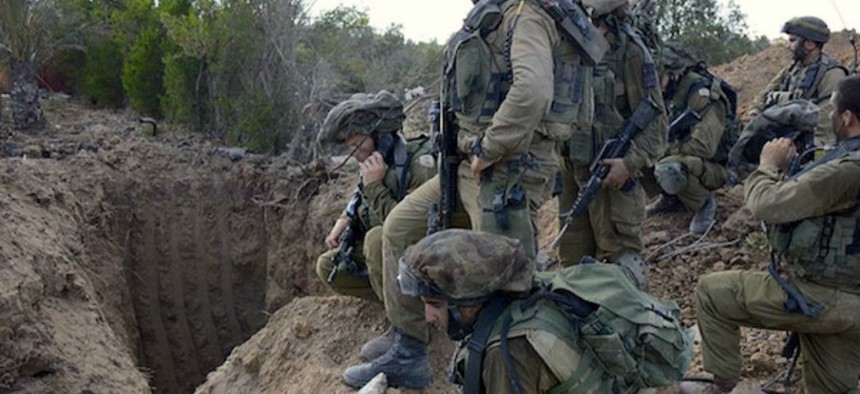Wave-relay radio tech connects soldiers for underground combat
The Army’s Rapid Equipping Force is developing and testing a wave relay system to connect underground forces with above ground commanders.
As part of its move to prepare soldiers for the full-range of possible combat scenarios, the Army's Rapid Equipping Force is now testing an emerging wave relay radio technology able to connect fighters underground in caves or tunnels to their surface commanders.
Subterranean operations include an inability to communicate via analog or digital communications, conduct unmanned reconnaissance and persistent surveillance, see without ambient light, maintain situational awareness of friendly forces, and see through obscurants, said service officials.
When in a subterranean environment, line-of-sight radio connectivity and other forms of networking are often compromised. To address the issue, the Army is evaluating a small terrestrial-based ad hoc radio that uses frequency modulation, said Lt. Col. Dominic Ciaramitaro, Chief of Outreach and Assessments at the Rapid Equipping Force.
Also, weapons and technology developers emphasize that these types of environments often have insufficient force protection, present hazardous air conditions, and inhibit the transportation of heavy loads.
The REF received a request from the 2nd Infantry Division in 2012 for an equipment set to conduct operations in tunnel complexes in Korea. The U.S. Army Asymmetric Warfare Group partnered with REF to assemble and assess government-developed subterranean systems and commercial off-the-shelf technologies.
The emerging networked system relies upon a MPU5 Mobile Ad Hock Networking unit using a small puck engineered with a WiFi repeater that can function like a relay radio. It is designed to connect maneuvering soldiers to an aboveground commander who can track their movements and activity.
“It is battery operated and kept on the ground. It uses bright LED lights with an adhesive on it as part of a visual augmentation piece,” Ciaramitaro said.
The small puck works in tandem with an electronic warlock personal tracker device attached to a soldier’s boot. As long as there is a line-of-sight connectivity from the puck to a node on the network, it functions as a key relay to connect soldiers in tunnels with soldiers aboveground, he said.
“In conjunction with the radio, this will monitor a soldier’s foot movement on the ground and pick up human tracks – exactly where they walk on the ground. Through the ground puck, the signal reaches above ground,” Ciaramitaro added.
The pedometer works directly with the wave radios, sending signals wirelessly to an end user smartphone device, REF developers explained.
Bluetooth wireless technology tracks soldiers’ distance, sending a signal through radios to the end user device. This creates a mesh network with multiple radios functioning as nodes on a larger communications system.
The ad hoc wireless network is intended to work in tandem with image-intensifying infrared night vision technology able to function without external illumination of any kind, said Lt. Col. Steve Delgado, chief of operations, REF.
“If you are in a completely light deprived environment, you can still see through infrared illumination,” Delgado said. “When you are Sub T (subterranean), there is no moon and you may not have a flood light. A battery-powered light will expose your position.”
The 82nd Airborne Division at the Muscatatuck Urban Training Complex, North Vernon, Ind., recently conducted a week-long subterranean training event, culminating in a simulated underground rescue mission, service officials said.
Results from the training are now being analyzed.





